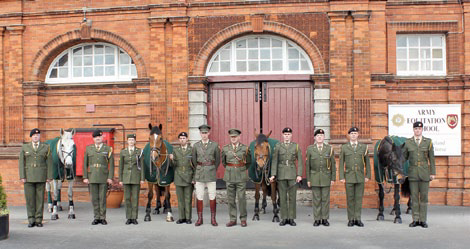Published in An Cosantóir on July 1, 2011.
By Sgt Wayne Fitzgerald – Photos DF Photographers & Courtesy www.unmultimedia.org
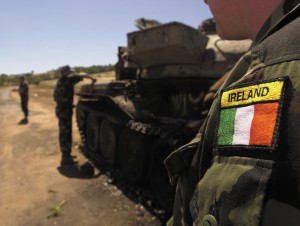 On the eve of the return of an Irish battalion to serve with The United Nations Interim Force in Lebanon (UNIFIL), Sgt Wayne Fitzgerald met with Mr Guy Jonas of the Irish-Lebanese Cultural Foundation to find out about his organisation and his views on the return of Irish troops to South Lebanon.
On the eve of the return of an Irish battalion to serve with The United Nations Interim Force in Lebanon (UNIFIL), Sgt Wayne Fitzgerald met with Mr Guy Jonas of the Irish-Lebanese Cultural Foundation to find out about his organisation and his views on the return of Irish troops to South Lebanon.
Can you tell us something about yourself?
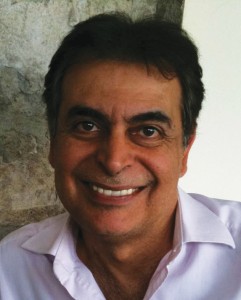 I am from an emigrant family; my grandfather was born in Buenos Aires, and I was born and raised in Lebanon. My mother still lives in Jounieh, just outside Beirut. I left Lebanon in 1976. I am an engineer by profession and I met my wife, who is from Thurles, while working in Abu Dabi in the UAE. We married and lived for several years in Abu Dabi but when we decided to start a family we felt we wanted to raise our children in Ireland so we moved over here 12 years ago. I had always enjoyed my trips to Ireland.
I am from an emigrant family; my grandfather was born in Buenos Aires, and I was born and raised in Lebanon. My mother still lives in Jounieh, just outside Beirut. I left Lebanon in 1976. I am an engineer by profession and I met my wife, who is from Thurles, while working in Abu Dabi in the UAE. We married and lived for several years in Abu Dabi but when we decided to start a family we felt we wanted to raise our children in Ireland so we moved over here 12 years ago. I had always enjoyed my trips to Ireland.
How did the idea for the Irish-Lebanese Cultural Foundation come about?
It’s funny really. I saw the parade through O’Connell Street of the last Irish battalion to serve in Lebanon in 2001 and that was the first time I knew that Irish troops had been serving in my country. I was amazed then when I found out that they had been there since 1978! I became very interested in the Defence Forces’ time in Lebanon and the more I found out about it the more I felt that there was a lack of a concrete link between our two countries to continue and develop the ties that had grown over all those years. That was when I decided to establish a cultural foundation. Since then it has grown all the time and we are strongly involved with Irish UNIFIL veterans. I have been organising and accompanying groups of veterans to Lebanon for several years now.
How much contact do you have with your homeland?
A lot. I go to Lebanon at least four times a year and 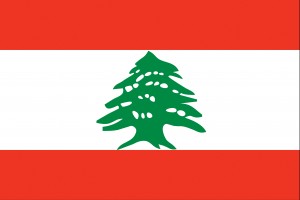 keep in touch with family by phone. I also read the Lebanese papers on-line every day and listen to the Lebanese news. Although I left Lebanon in 1976 I returned for a few years from 1984 to 1988, during which time I worked very closely with the Lebanese Armed Forces. The guys I knew at that time who were all captains and majors are now generals, so I still have very good links with the Lebanese Armed Forces (LAF).
keep in touch with family by phone. I also read the Lebanese papers on-line every day and listen to the Lebanese news. Although I left Lebanon in 1976 I returned for a few years from 1984 to 1988, during which time I worked very closely with the Lebanese Armed Forces. The guys I knew at that time who were all captains and majors are now generals, so I still have very good links with the Lebanese Armed Forces (LAF).
What is the Lebanese view of UNIFIL at the current time?
Awareness of UNIFIL has never been as good in the north of Lebanon. When I lived in Lebanon there was strict control of information which meant that we knew almost nothing of what was going on in South Lebanon. A number of years ago President Gemayel had instituted a medal for UN peacekeepers who served in Lebanon but the parliament voted to discontinue it quite soon after and very few were awarded.
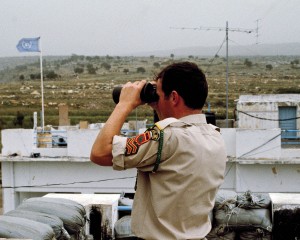 I was approached about this matter by some Irish veterans and I said I would do what I could. So, when I met the chief of staff of the LAF I brought this subject up with him and told him that I felt Irish UNIFIL veterans would be delighted with a special Lebanon service medal. He was very much in favour and although he said it would be very difficult to reinstitute the same medal he would have no problem instituting a new medal of appreciation and asked me how many I wanted!
I was approached about this matter by some Irish veterans and I said I would do what I could. So, when I met the chief of staff of the LAF I brought this subject up with him and told him that I felt Irish UNIFIL veterans would be delighted with a special Lebanon service medal. He was very much in favour and although he said it would be very difficult to reinstitute the same medal he would have no problem instituting a new medal of appreciation and asked me how many I wanted!
Subsequently we received 500 medals, which were distributed to veterans. They are in huge demand and I could do with many more.
What do people think about the impending return of the Irish to South Lebanon and how do you think things will work out?
The minute the people of Tibnine heard that the Irish might be coming back to Lebanon, they organised a petition that was signed by many people, including Mr Fawaz, the deputy mayor, requesting that they should be based back in Tibnine.
This petition was sent to UNIFIL HQ in Naqoura and then forwarded to UN HQ in New York. This shows the extent of the goodwill that is there and the connection that exists between our people.
This view is shared by the Lebanese government. In a letter to the Irish-Lebanese Cultural Foundation in March the Osseiran said,
‘…the Irish battalion is preparing to be redeployed in South Lebanon in the next couple of months and I can assure you that the government and people of Lebanon are looking forward to receiving those Irish men and women with open arms.’
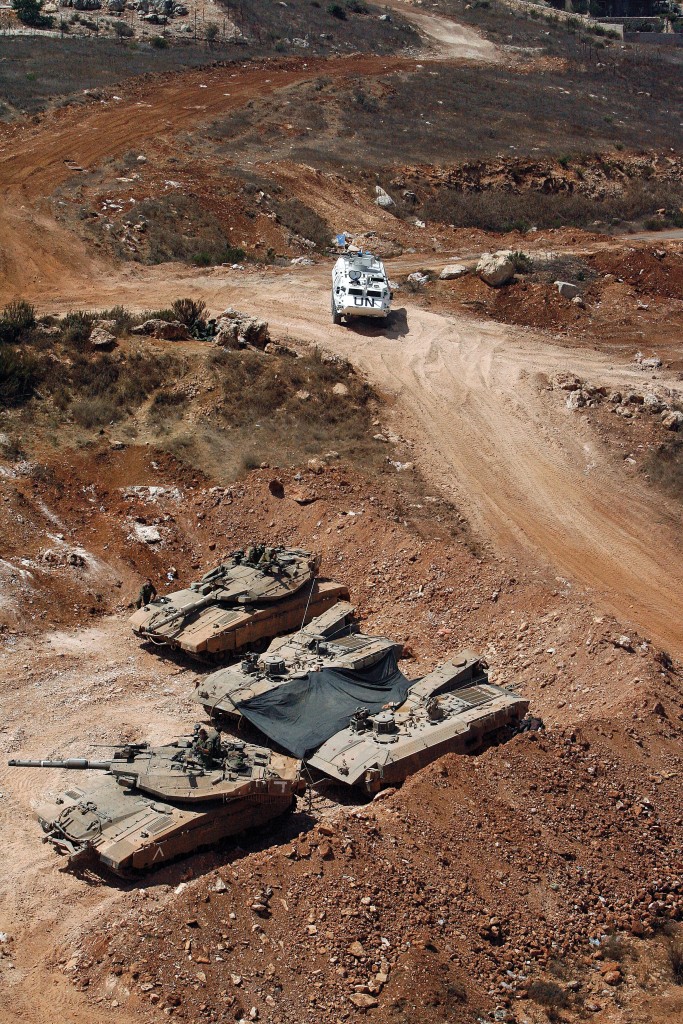 After 2000, when the south was liberated, it was natural for Ireland to pull its troops out as there was nothing really for them to do. Since then we had the war of 2006 followed by UN Security Resolution 1701 which gave UNIFIL a renewed, stronger, more efficient mandate to create a buffer zone and to protect the border. This has brought new rules of engagement that are very different to those that were in place previously. The rise of planned protest along the border by people demanding the right to return to their homes, a legitimate demand in my opinion, but one that is not being carried out in a proper fashion, is leading to a very different situation. Your presence is needed and will be welcomed by a lot of people but it won’t be the same as it used to be. You won’t be mingling with the public to the same extent. Lots of things have changed.
After 2000, when the south was liberated, it was natural for Ireland to pull its troops out as there was nothing really for them to do. Since then we had the war of 2006 followed by UN Security Resolution 1701 which gave UNIFIL a renewed, stronger, more efficient mandate to create a buffer zone and to protect the border. This has brought new rules of engagement that are very different to those that were in place previously. The rise of planned protest along the border by people demanding the right to return to their homes, a legitimate demand in my opinion, but one that is not being carried out in a proper fashion, is leading to a very different situation. Your presence is needed and will be welcomed by a lot of people but it won’t be the same as it used to be. You won’t be mingling with the public to the same extent. Lots of things have changed.
Another big change is in relation to the LAF. In the past the Irish only had people like the local mukhtar to turn to for information and support whereas now the Lebanese army is deployed all the way to the border and is working hand-in-hand with UNIFIL. Also, several LAF officers have attended courses in the UN school in the Curragh and have established very good relations with their Irish counterparts.
Finally, what are your hopes for the future of your country?
We have a wonderful opportunity in Lebanon at this time. We have a president in Michel Sleiman, a former commander-in-chief of the LAF, who is extremely scrupulous in the application of the law and who is intent on helping Lebanon to become a better place. Also the events that are taking place all around the Middle East and North Africa are taking the spotlight off Lebanon for once. For too long we were seen as the ‘black sheep’ of the region, even though we generally enjoyed more freedoms and human rights protection than most other countries in the region.
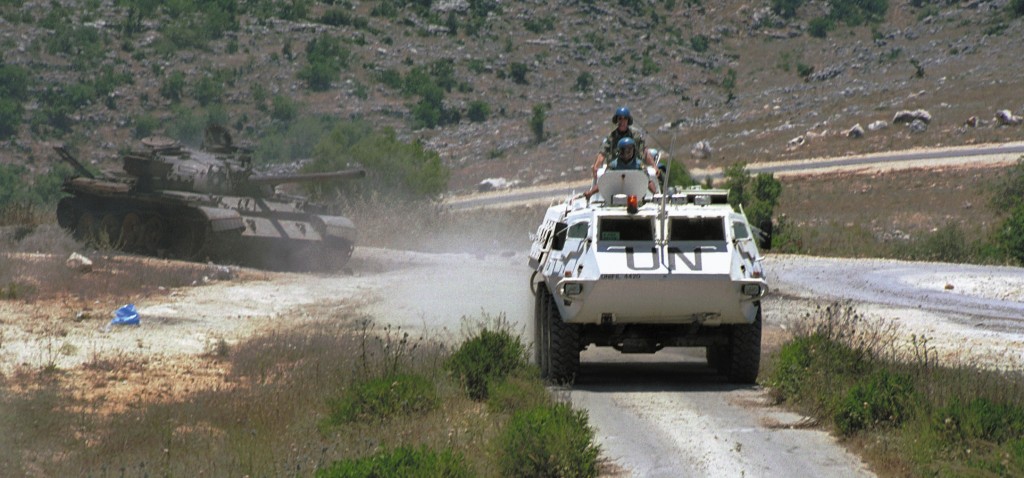 Of course, we are also facing a lot of serious challenges, like emigration, but the country had been doing very well economically. At a time when most of the world’s economies almost collapsed, Lebanon was still achieving growth rates of 6% or 7% a year. Indeed, Irish troops returning to Lebanon who may have served there in the past will be amazed by the development that has take place in South Lebanon, as seen in the new roads and fine villas that have grown up all around places like Haris. Given the chance that a permanent peace would provide, I believe Lebanon has much to give to the world. We are a talented, resourceful, multi-lingual people and with the help and goodwill of the international community I truly believe that we are going to pick up from here and do very well.
Of course, we are also facing a lot of serious challenges, like emigration, but the country had been doing very well economically. At a time when most of the world’s economies almost collapsed, Lebanon was still achieving growth rates of 6% or 7% a year. Indeed, Irish troops returning to Lebanon who may have served there in the past will be amazed by the development that has take place in South Lebanon, as seen in the new roads and fine villas that have grown up all around places like Haris. Given the chance that a permanent peace would provide, I believe Lebanon has much to give to the world. We are a talented, resourceful, multi-lingual people and with the help and goodwill of the international community I truly believe that we are going to pick up from here and do very well.
Read these stories and more in An Cosantóir (The Defender) The official magazine of the Irish Defence Forces – www.dfmagazine.ie
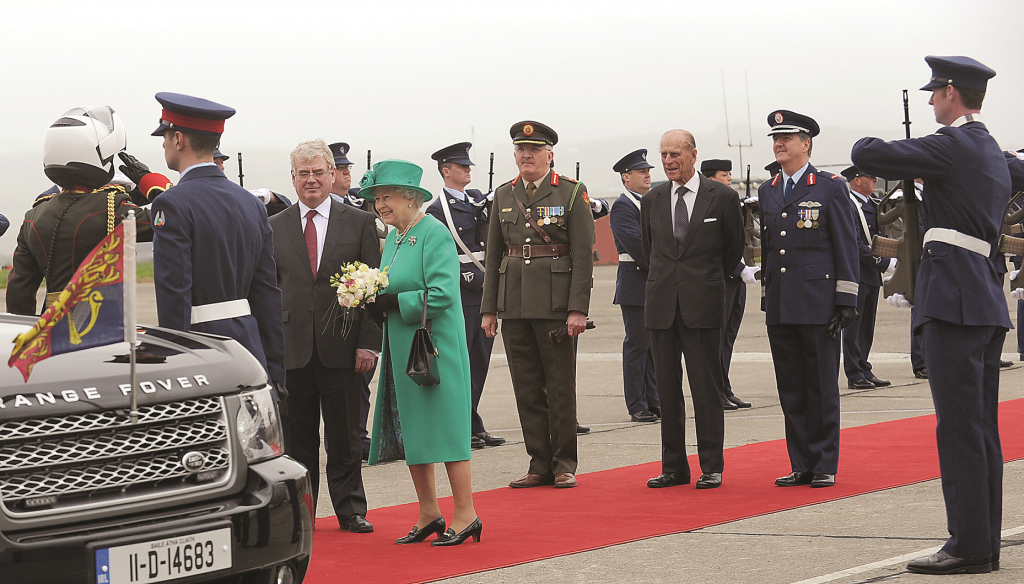 Capt Laura Keane (OiC Motorcycle Escort, 2 Cav Sqn) salutes Queen Elizabeth on her arrival at Casement Aerodrome. Also pictured are An Tánaiste, Mr Eamon Glimore TD, Maj Gen Dave Ashe (D COS Sp), Prince Philip, The Duke of Edinburgh and Brig Gen Paul Fry (GOC Air Corps). The Air Corps provided a Courtesy Guard of Honour.
Capt Laura Keane (OiC Motorcycle Escort, 2 Cav Sqn) salutes Queen Elizabeth on her arrival at Casement Aerodrome. Also pictured are An Tánaiste, Mr Eamon Glimore TD, Maj Gen Dave Ashe (D COS Sp), Prince Philip, The Duke of Edinburgh and Brig Gen Paul Fry (GOC Air Corps). The Air Corps provided a Courtesy Guard of Honour.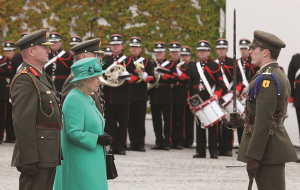
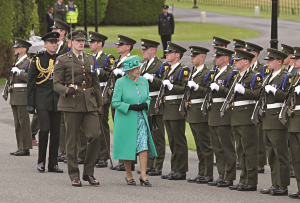
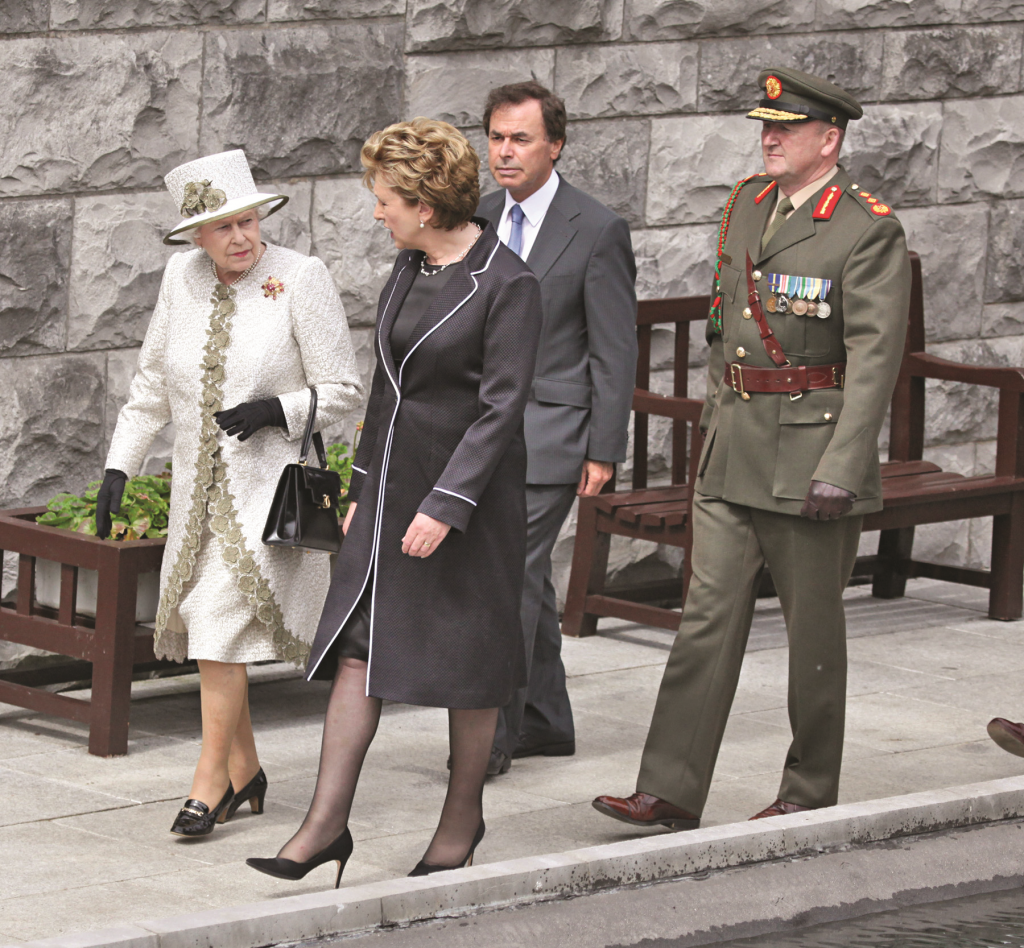
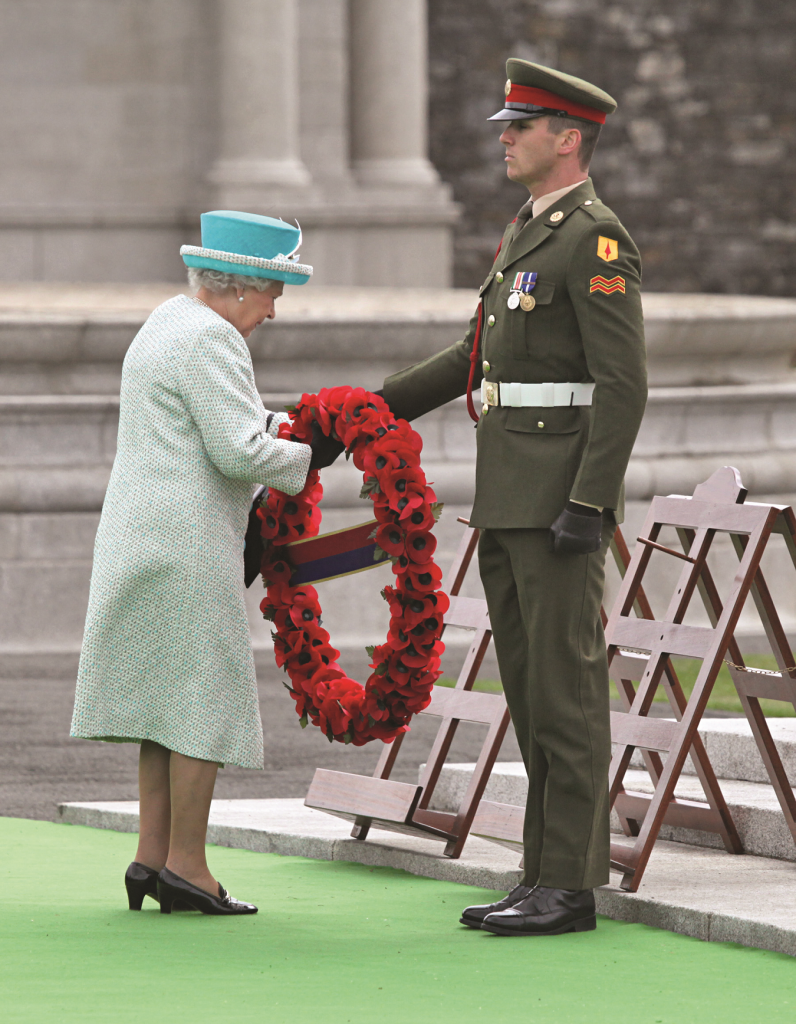 Cpl Derek Brunt (2 E Bde MP Coy) hands Queen Elizabeth a poppy wreath during a ceremony at the War Memorial Gardens, Islandbridge, to mark the 49,400 Irishmen who died while serving in the British Army during World War One.
Cpl Derek Brunt (2 E Bde MP Coy) hands Queen Elizabeth a poppy wreath during a ceremony at the War Memorial Gardens, Islandbridge, to mark the 49,400 Irishmen who died while serving in the British Army during World War One.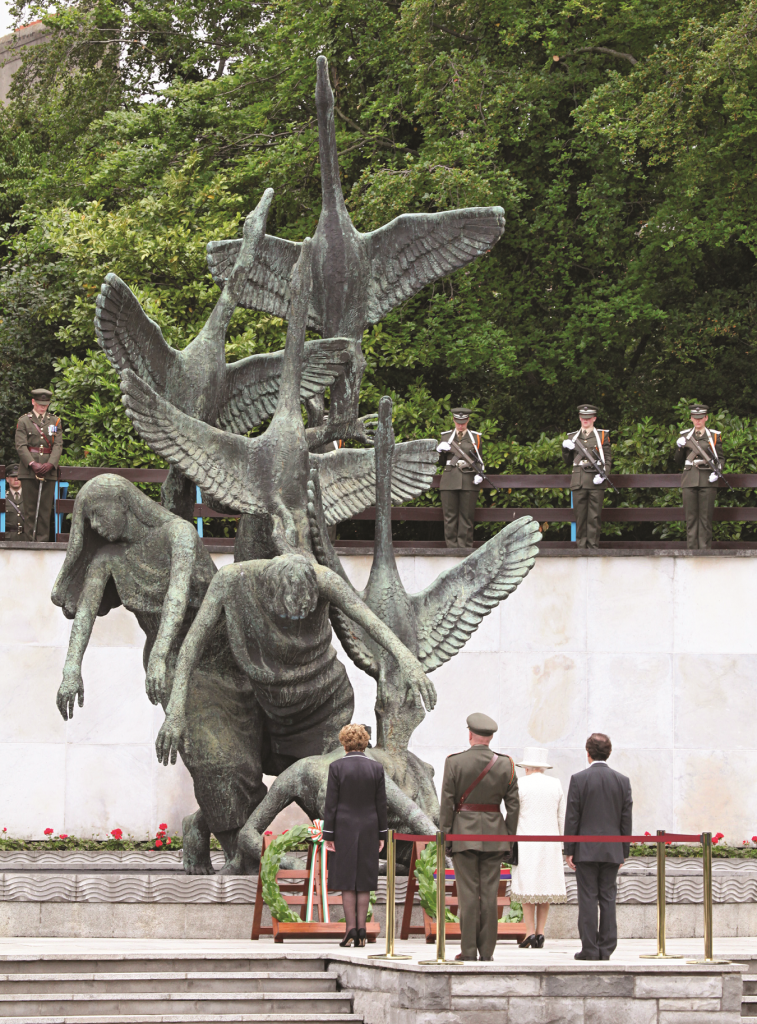
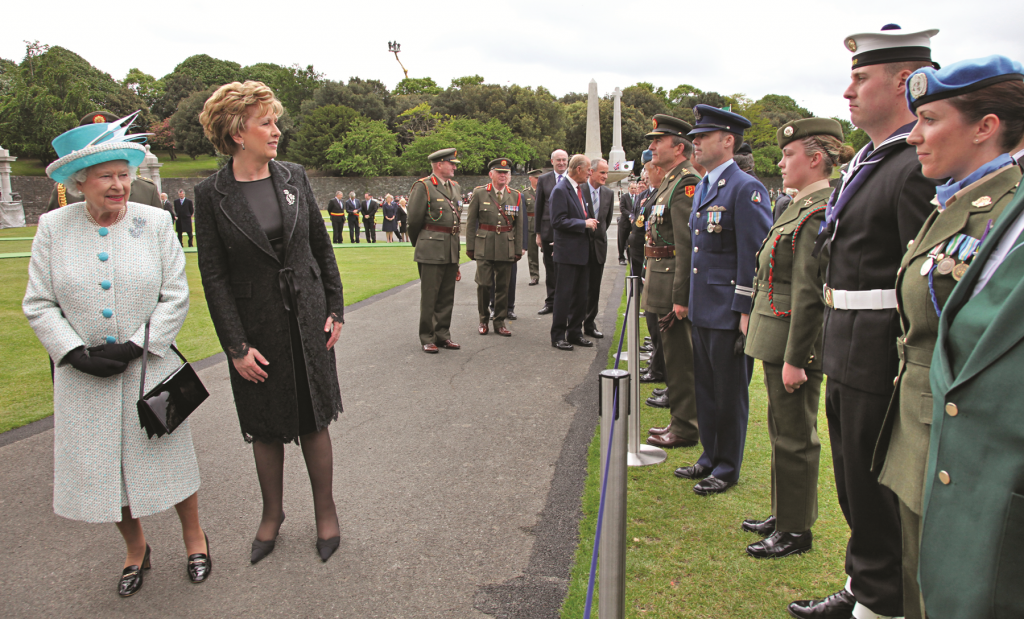
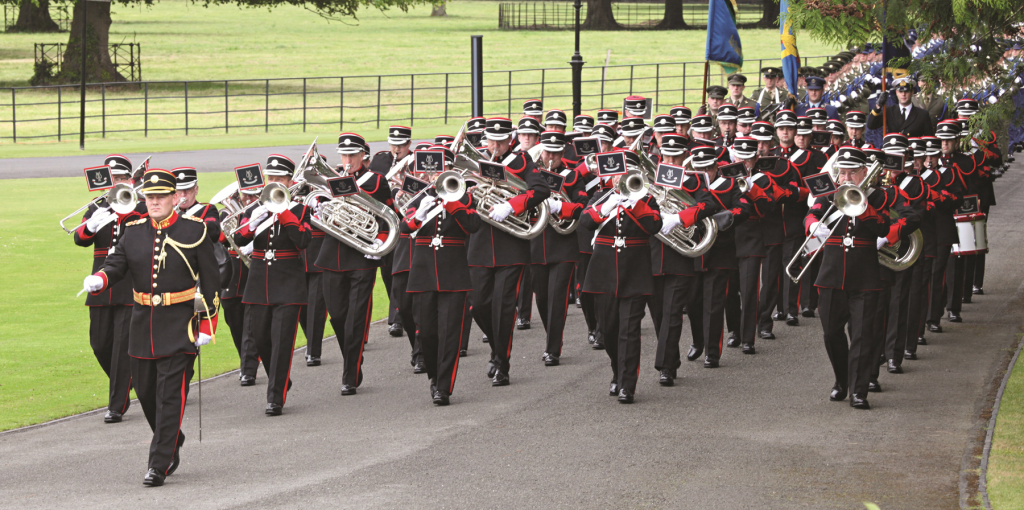

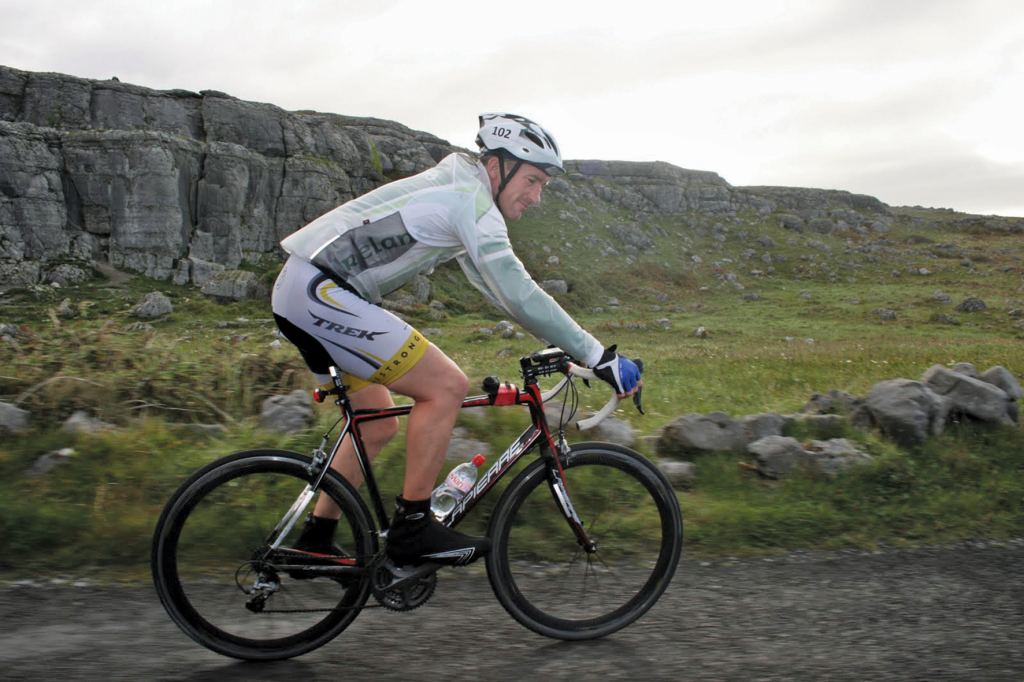 It requires stamina, true grit and sheer determination to take on a gruelling 12-day, 3,000-mile journey on a bicycle, but that is exactly what 39-year-old, former corporal, Donncha Cuttriss has been training for every day since he left the Defence Forces in January. His goal is to be the first Irishman to participate as a solo competitor in the Race Across America (RAAM), widely recognised as ‘the world’s toughest cycle race’. The race starts in Oceanside, California, and ends in Anapolis, Maryland, passing through Arizona, Utah, Colorado, Kansas, Missouri, Illinois, Indiana, Ohio, West Virginia and Pennsylvania on the way, and climbing to 10,849ft at its highest point.
It requires stamina, true grit and sheer determination to take on a gruelling 12-day, 3,000-mile journey on a bicycle, but that is exactly what 39-year-old, former corporal, Donncha Cuttriss has been training for every day since he left the Defence Forces in January. His goal is to be the first Irishman to participate as a solo competitor in the Race Across America (RAAM), widely recognised as ‘the world’s toughest cycle race’. The race starts in Oceanside, California, and ends in Anapolis, Maryland, passing through Arizona, Utah, Colorado, Kansas, Missouri, Illinois, Indiana, Ohio, West Virginia and Pennsylvania on the way, and climbing to 10,849ft at its highest point.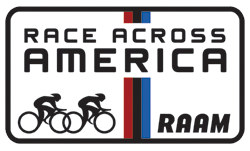
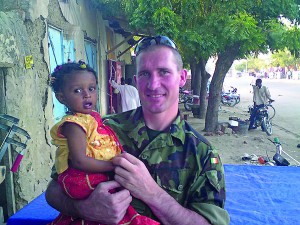 When Donncha left the Defence Forces in January 2011 he had completed 21 years service, during which he had served in 1 Fd CIS, the DFTC, and 1 Fd Engr Coy. He also had 10 trips overseas to missions in Lebanon, Eritrea, Liberia and Chad. He credits his military service with equipping him with the necessary attitude and skills required when training for a challenge such as the RAAM. Donncha must average 22 hours cycling a day to achieve the fitness and stamina levels needed to compete in the race. He has already completed 24- and 30-hour cycles with his crew, and his training continues. He departed for the US on May 16th to complete his last month’s training before the big race starts on June 15th. On the day the race starts RTÉ are to broadcast a documentary on Donncha’s training and preparations for the race.
When Donncha left the Defence Forces in January 2011 he had completed 21 years service, during which he had served in 1 Fd CIS, the DFTC, and 1 Fd Engr Coy. He also had 10 trips overseas to missions in Lebanon, Eritrea, Liberia and Chad. He credits his military service with equipping him with the necessary attitude and skills required when training for a challenge such as the RAAM. Donncha must average 22 hours cycling a day to achieve the fitness and stamina levels needed to compete in the race. He has already completed 24- and 30-hour cycles with his crew, and his training continues. He departed for the US on May 16th to complete his last month’s training before the big race starts on June 15th. On the day the race starts RTÉ are to broadcast a documentary on Donncha’s training and preparations for the race.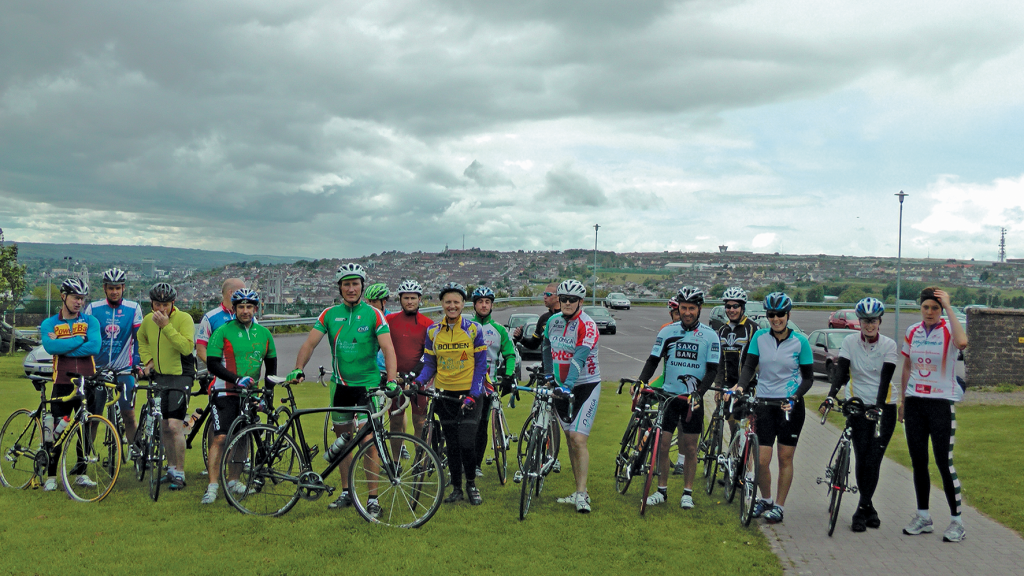 Using his efforts to raise money for charity is also very important to the Corkman and his chosen charity is the Meath-based Aisling Group International, founded in 1988 by Marie Byrne, which provides help and information for people in relation to drugs and alcohol misuse. The Aisling Group’s domestic and international charity work received deserved recognition in 2008 when it was presented with an All Islands Special Endeavour Award by President Mary McAleese. Thankfully, people like Donncha give us mere mortals a chance to help worthwhile charities the easy way, by ‘donating a little to help a lot’.
Using his efforts to raise money for charity is also very important to the Corkman and his chosen charity is the Meath-based Aisling Group International, founded in 1988 by Marie Byrne, which provides help and information for people in relation to drugs and alcohol misuse. The Aisling Group’s domestic and international charity work received deserved recognition in 2008 when it was presented with an All Islands Special Endeavour Award by President Mary McAleese. Thankfully, people like Donncha give us mere mortals a chance to help worthwhile charities the easy way, by ‘donating a little to help a lot’. Fundraising was launched 2 months ago by Cork’s Lord Mayor Michael O’Connell where Donncha was accorded a Civic Reception. In one event Donncha’s friends organised a 25km charity cycle through Cork City, setting out from Collins Bks and stopping off at the Elm Tree Bar & Restaurant in Glounthane for light refreshments. The Elm Tree is owned by Capper’s old schoolmate and lifelong friend Derek Walshe who generously donated €3,000 towards Donncha’s costs for the RAAM, which are estimated at €20,000. Everything received above that amount will go to the Aisling Group. Donncha’s bike worth €6,000 was sponsored by
Fundraising was launched 2 months ago by Cork’s Lord Mayor Michael O’Connell where Donncha was accorded a Civic Reception. In one event Donncha’s friends organised a 25km charity cycle through Cork City, setting out from Collins Bks and stopping off at the Elm Tree Bar & Restaurant in Glounthane for light refreshments. The Elm Tree is owned by Capper’s old schoolmate and lifelong friend Derek Walshe who generously donated €3,000 towards Donncha’s costs for the RAAM, which are estimated at €20,000. Everything received above that amount will go to the Aisling Group. Donncha’s bike worth €6,000 was sponsored by  On the eve of the return of an Irish battalion to serve with The United Nations Interim Force in Lebanon (UNIFIL), Sgt Wayne Fitzgerald met with Mr Guy Jonas of the Irish-Lebanese Cultural Foundation to find out about his organisation and his views on the return of Irish troops to South Lebanon.
On the eve of the return of an Irish battalion to serve with The United Nations Interim Force in Lebanon (UNIFIL), Sgt Wayne Fitzgerald met with Mr Guy Jonas of the Irish-Lebanese Cultural Foundation to find out about his organisation and his views on the return of Irish troops to South Lebanon. I am from an emigrant family; my grandfather was born in Buenos Aires, and I was born and raised in Lebanon. My mother still lives in Jounieh, just outside Beirut. I left Lebanon in 1976. I am an engineer by profession and I met my wife, who is from Thurles, while working in Abu Dabi in the UAE. We married and lived for several years in Abu Dabi but when we decided to start a family we felt we wanted to raise our children in Ireland so we moved over here 12 years ago. I had always enjoyed my trips to Ireland.
I am from an emigrant family; my grandfather was born in Buenos Aires, and I was born and raised in Lebanon. My mother still lives in Jounieh, just outside Beirut. I left Lebanon in 1976. I am an engineer by profession and I met my wife, who is from Thurles, while working in Abu Dabi in the UAE. We married and lived for several years in Abu Dabi but when we decided to start a family we felt we wanted to raise our children in Ireland so we moved over here 12 years ago. I had always enjoyed my trips to Ireland. keep in touch with family by phone. I also read the Lebanese papers on-line every day and listen to the Lebanese news. Although I left Lebanon in 1976 I returned for a few years from 1984 to 1988, during which time I worked very closely with the Lebanese Armed Forces. The guys I knew at that time who were all captains and majors are now generals, so I still have very good links with the Lebanese Armed Forces (LAF).
keep in touch with family by phone. I also read the Lebanese papers on-line every day and listen to the Lebanese news. Although I left Lebanon in 1976 I returned for a few years from 1984 to 1988, during which time I worked very closely with the Lebanese Armed Forces. The guys I knew at that time who were all captains and majors are now generals, so I still have very good links with the Lebanese Armed Forces (LAF). I was approached about this matter by some Irish veterans and I said I would do what I could. So, when I met the chief of staff of the LAF I brought this subject up with him and told him that I felt Irish UNIFIL veterans would be delighted with a special Lebanon service medal. He was very much in favour and although he said it would be very difficult to reinstitute the same medal he would have no problem instituting a new medal of appreciation and asked me how many I wanted!
I was approached about this matter by some Irish veterans and I said I would do what I could. So, when I met the chief of staff of the LAF I brought this subject up with him and told him that I felt Irish UNIFIL veterans would be delighted with a special Lebanon service medal. He was very much in favour and although he said it would be very difficult to reinstitute the same medal he would have no problem instituting a new medal of appreciation and asked me how many I wanted! After 2000, when the south was liberated, it was natural for Ireland to pull its troops out as there was nothing really for them to do. Since then we had the war of 2006 followed by UN Security Resolution 1701 which gave UNIFIL a renewed, stronger, more efficient mandate to create a buffer zone and to protect the border. This has brought new rules of engagement that are very different to those that were in place previously. The rise of planned protest along the border by people demanding the right to return to their homes, a legitimate demand in my opinion, but one that is not being carried out in a proper fashion, is leading to a very different situation. Your presence is needed and will be welcomed by a lot of people but it won’t be the same as it used to be. You won’t be mingling with the public to the same extent. Lots of things have changed.
After 2000, when the south was liberated, it was natural for Ireland to pull its troops out as there was nothing really for them to do. Since then we had the war of 2006 followed by UN Security Resolution 1701 which gave UNIFIL a renewed, stronger, more efficient mandate to create a buffer zone and to protect the border. This has brought new rules of engagement that are very different to those that were in place previously. The rise of planned protest along the border by people demanding the right to return to their homes, a legitimate demand in my opinion, but one that is not being carried out in a proper fashion, is leading to a very different situation. Your presence is needed and will be welcomed by a lot of people but it won’t be the same as it used to be. You won’t be mingling with the public to the same extent. Lots of things have changed. Of course, we are also facing a lot of serious challenges, like emigration, but the country had been doing very well economically. At a time when most of the world’s economies almost collapsed, Lebanon was still achieving growth rates of 6% or 7% a year. Indeed, Irish troops returning to Lebanon who may have served there in the past will be amazed by the development that has take place in South Lebanon, as seen in the new roads and fine villas that have grown up all around places like Haris. Given the chance that a permanent peace would provide, I believe Lebanon has much to give to the world. We are a talented, resourceful, multi-lingual people and with the help and goodwill of the international community I truly believe that we are going to pick up from here and do very well.
Of course, we are also facing a lot of serious challenges, like emigration, but the country had been doing very well economically. At a time when most of the world’s economies almost collapsed, Lebanon was still achieving growth rates of 6% or 7% a year. Indeed, Irish troops returning to Lebanon who may have served there in the past will be amazed by the development that has take place in South Lebanon, as seen in the new roads and fine villas that have grown up all around places like Haris. Given the chance that a permanent peace would provide, I believe Lebanon has much to give to the world. We are a talented, resourceful, multi-lingual people and with the help and goodwill of the international community I truly believe that we are going to pick up from here and do very well.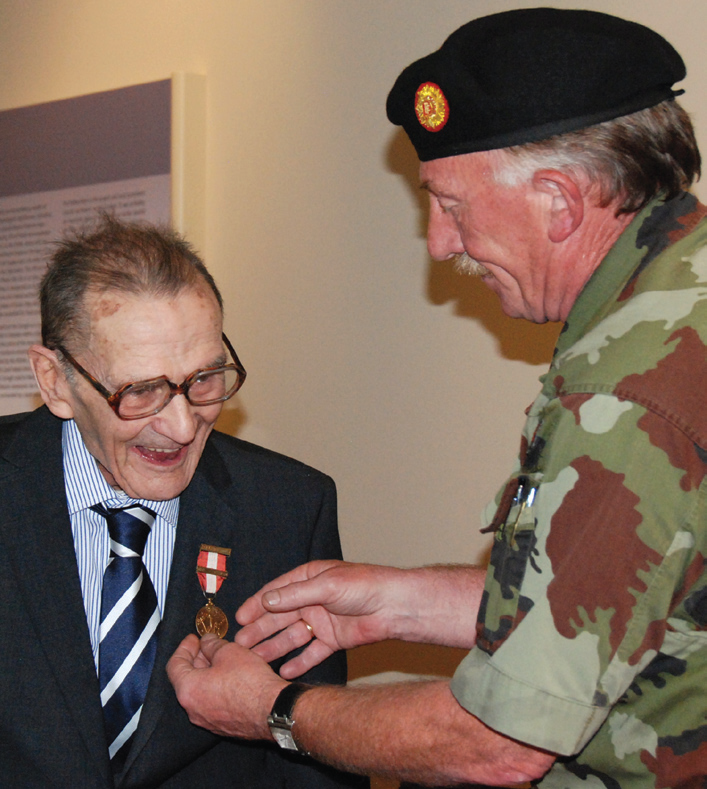
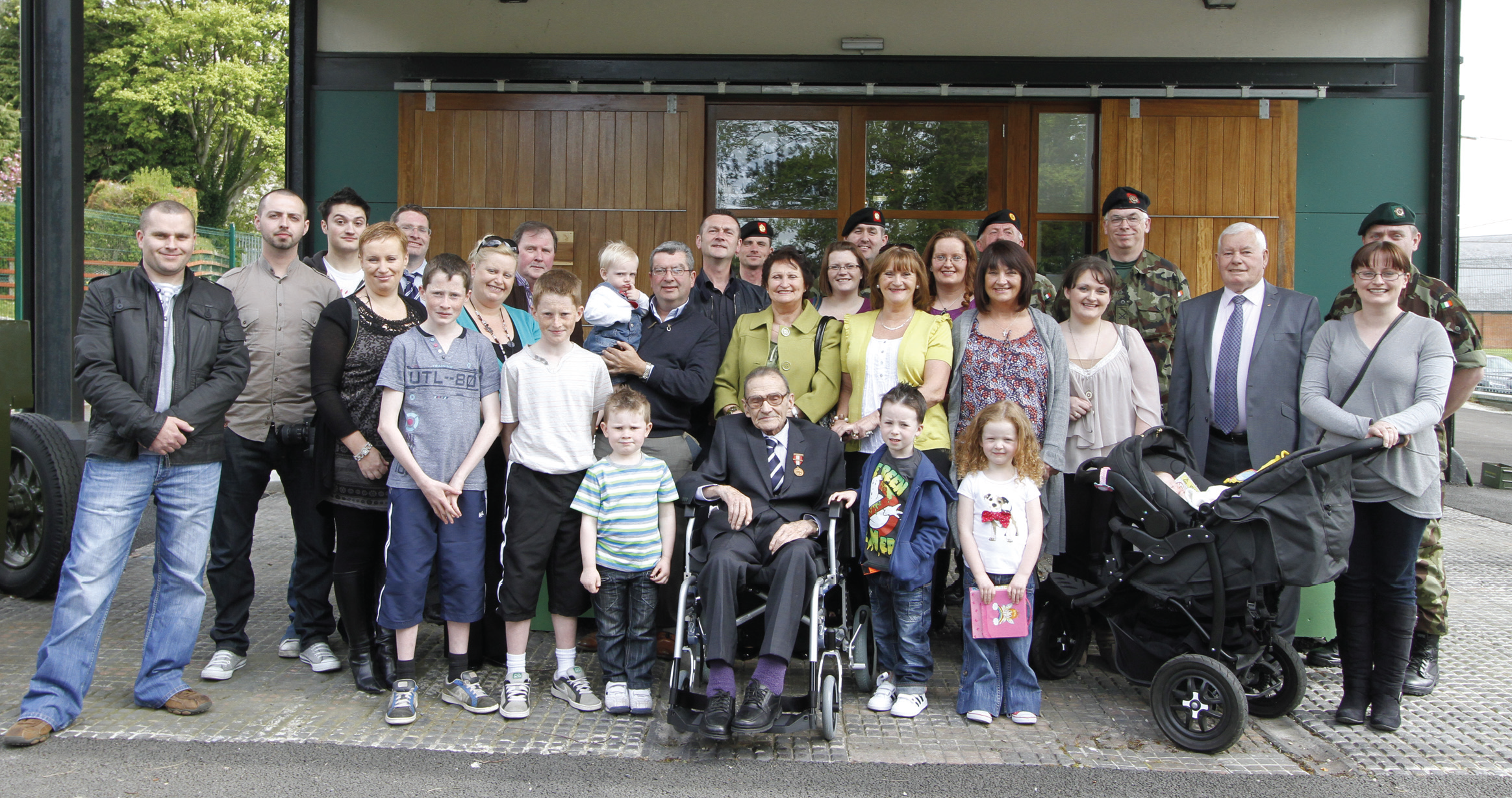
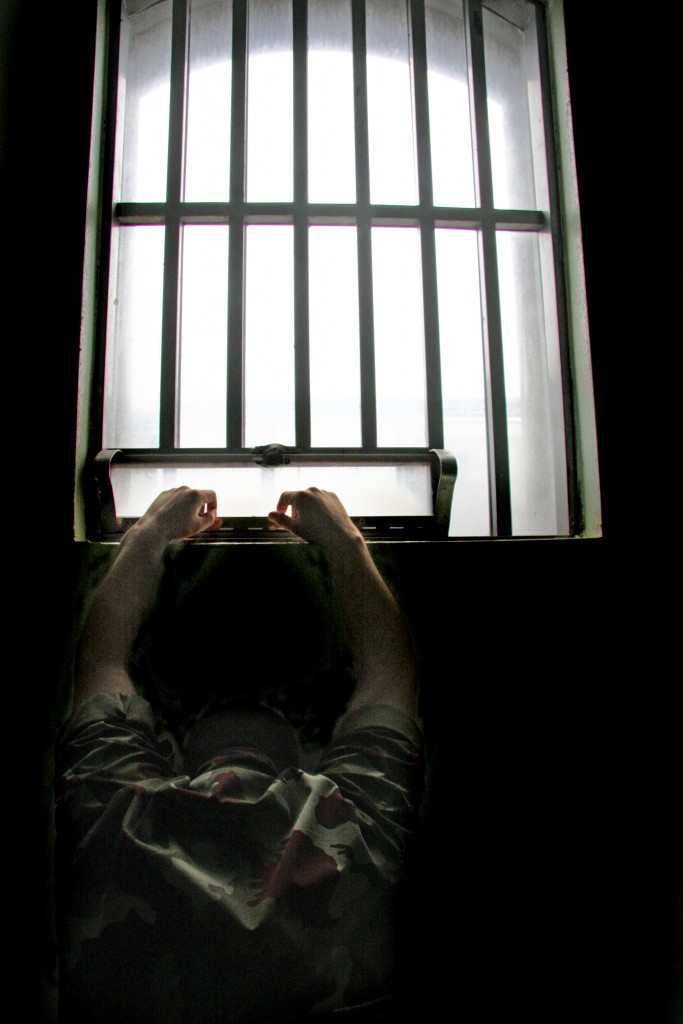 Recently the
Recently the 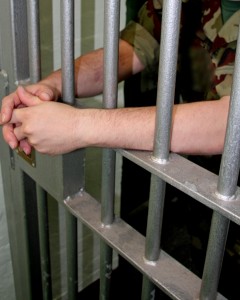 The next item on the programme is military discipline again this time in the form of ‘Foot Drill’. Conducted in the exercise yard with its high dull grey walls and its daunting confined presence, where sometimes even sunlight would need a lift to shine in. Foot Drill not being a favourite pastime for many a soldier I’m sure then the allotted 3-hours per day of it would wear the best of us down.
The next item on the programme is military discipline again this time in the form of ‘Foot Drill’. Conducted in the exercise yard with its high dull grey walls and its daunting confined presence, where sometimes even sunlight would need a lift to shine in. Foot Drill not being a favourite pastime for many a soldier I’m sure then the allotted 3-hours per day of it would wear the best of us down.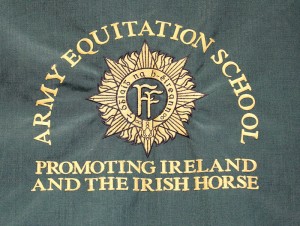
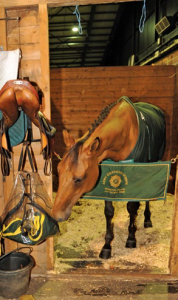 The Equitation School have run two grooms courses of six weeks duration this year so far. The course climaxed with the students completing a general test (GT), a riding test and a lunging test – lunging is walking the horse around in a circle which exercises a particular side of the animal. Students are assigned two horses, one to ride and one for lunging; everything is taken into consideration when being assigned a horse, like injuries and size. Then the Grooms had to present themselves and their respective horse for a Commanding Officers (COs) Inspection – which includes getting the horses hair plaited and making sure the Tack i.e. Saddle and Bridle are in pristine condition and that’s before they get their own No1 Uniforms ready.
The Equitation School have run two grooms courses of six weeks duration this year so far. The course climaxed with the students completing a general test (GT), a riding test and a lunging test – lunging is walking the horse around in a circle which exercises a particular side of the animal. Students are assigned two horses, one to ride and one for lunging; everything is taken into consideration when being assigned a horse, like injuries and size. Then the Grooms had to present themselves and their respective horse for a Commanding Officers (COs) Inspection – which includes getting the horses hair plaited and making sure the Tack i.e. Saddle and Bridle are in pristine condition and that’s before they get their own No1 Uniforms ready.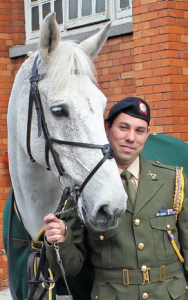 1st GROOMS COURSE (13/02/12 TO 24/03/12)
1st GROOMS COURSE (13/02/12 TO 24/03/12)